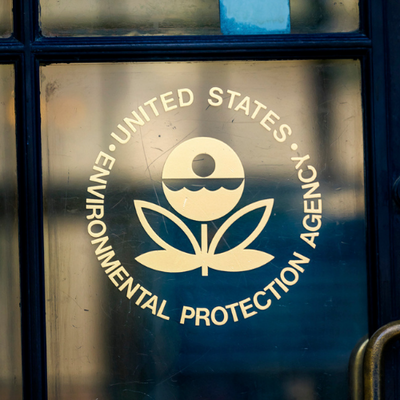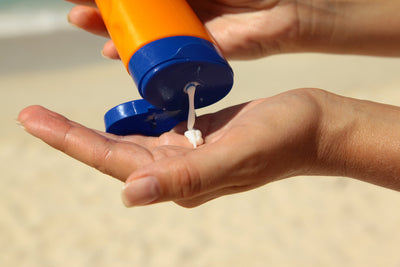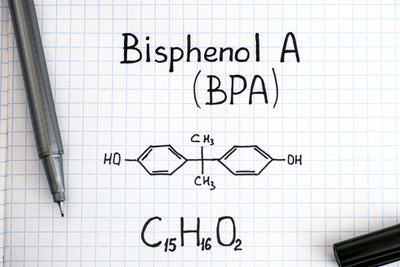Using a reusable water bottle and filling it up with filtered tap water can reduce your carbon footprint and save you money.
Water Quality InformationWritten By Actual Experts
RSSWhy Home Water Filters Are Better For The Environment:

Health Effects Caused by Exposure to PFAS Chemicals

EPA Announces National Strategy to Confront PFAS Pollution

Analies Dyjak, M.A. | Head of Policy and Perspectives
The Environmental Protection Agency announced on Monday, October 18, that the agency will prioritize a comprehensive national strategy to confront PFAS pollution. The Biden-Harris administration campaigned on setting limits in tap water for PFAS and ensuring other actionable protection measures for public health. The PFAS “roadmap” also includes a summary of recent proposals and recommendations from EPA and Congress.
What Does EPA's PFAS Roadmap Contain?
The roadmap consists of plans for both rulemaking and monitoring guidelines, but does not have any enforceable criteria. This EPA publication is simply a strategic plan for implementation, not a final rule. The seven actions are as follows:-
Timeline for nationwide enforceable drinking water limits for PFAS in tap water under the Safe Drinking Water Act.
-
Designating PFAS as a “hazardous substance” under the Comprehensive Environmental Response, Compensation, and Liability Act (CERCLA), also known as Superfund. This designation will help hold polluters financially responsible for contaminating source water.
-
A timeline for Effluent Guideline Limitations for nine different industrial categories.
-
An assessment of shortcomings of the Toxic Substances Control Act and its ability to protect public health.
-
An increase in monitoring, data collection, and research.
-
A final toxicity assessment for GenX.
-
Technical foundation for PFAS air emissions under the Clean Air Act.
Too Little Too Late?
Hydroviv has been covering PFAS in drinking water since our company began in 2016. Since then, virtually no action has been taken by the EPA or Congress regarding this category of chemicals that is known to cause cancer. The press release for this latest roadmap even stated that the EPA has known about the toxic nature of PFAS chemicals for over 20 years. The impacts of PFAS have now extended across multiple generations, when in all likelihood, this could have been avoided.
Other Articles We Think You Might Enjoy:What Are PFAS or 'Forever Chemicals'?
Is PFAS Exposure Toxic To The Immune System?
Does My Home State Regulate PFAS Chemicals in Drinking Water?
Oxybenzone and Drinking Water

Emily Driehaus | Science Communication Intern
Oxybenzone is a common sunscreen ingredient that has been shown to have negative impacts on human health and the environment. Evidence has shown that it can contaminate drinking water after being washed down the drain while showering off sunscreen.
What is Oxybenzone?
Oxybenzone is a UV filter used in sunscreen and other cosmetics. It absorbs UV rays from the sun and helps prevent them from penetrating the skin and causing sun damage. While it does help protect our skin against the sun, it has implications for both our health and the environment, particularly aquatic life.
Oxybenzone and Marine Life
Much of the concern regarding oxybenzone began when researchers noticed damage to coral reefs near beaches with many visitors. As sunscreen gets sloughed off the skin by the water and sand, it can make its way into the ocean and harm aquatic life. Coral reefs are especially susceptible to damage, as oxybenzone can harm normal growth and development, damage DNA and put them at an increased risk of bleaching.
Health Implications of Oxybenzone
As research into oxybenzone has continued, it has been designated as an endocrine disruptor. Endocrine disruptors interfere with normal hormonal processes in the body and can impact the reproductive system. Most research on oxybenzone in the human body has focused on absorption through the skin rather than ingestion, but more evidence has shown that oxybenzone is present in drinking water, especially in communities near large bodies of water.
How Does Oxybenzone Get Into Drinking Water?
After a day at the beach, most individuals hop in the shower to rinse off the sunscreen and sand that has accumulated on their skin throughout the day. When this water goes down the drain, it goes to wastewater treatment plants to be treated before being released into water sources, which can be used for drinking water. Wastewater treatment plants and drinking water facilities lack the ability to filter out endocrine disruptors like oxybenzone, so it ends up in drinking water consumed by the public. A study looking at oxybenzone in Honolulu tap water showed that individuals consume between 0.8-1.2 micrograms of oxybenzone a day from drinking water. This concentration is not particularly harmful to fully grown adults, but can have a greater impact on children, infants and developing fetuses.
Regulations on Oxybenzone
The previously mentioned study was submitted as part of testimony on a bill that would ban the sale of sunscreens containing oxybenzone in the state of Hawaii. The bill passed in 2018 and went into effect at the beginning of this year. The city of Key West, Florida has also enacted a ban on sunscreens with oxybenzone in an effort to protect coral reefs. These bans are not without controversy, as skin damage from UV rays can lead to skin cancer and banning sunscreens with oxybenzone leaves individuals in these areas with one less form of sun protection.
What Should I Do if I’m Concerned About Oxybenzone in my Water?
Carbon water filters are able to filter out oxybenzone and other endocrine disruptors. Using sunscreen with ingredients like zinc oxide or titanium dioxide rather than oxybenzone can also reduce your overall exposure. Switching sunscreens will also help protect aquatic life when you swim in bodies of water like lakes or oceans.
Other Articles We Think You Might Enjoy:BPA and Phthalates: Are These Two Endocrine Disruptors in Your Water?
Trump's "Dirty Water Rule" to be Revised
Drinking Water Supplies Risk Contamination from Toxic Wastewater Ponds
BPA and Phthalates: Are These Two Endocrine Disruptors in Your Water?

Analies Dyjak, M.A. | Head of Policy and Perspectives
Endocrine Disruptors are a category of contaminants that impact your body's natural ability to regulate hormones. Endocrine disruptors can be found in a variety of different consumer products like plastic containers, food cans, cosmetics, medical supplies, as well as drinking water. This article highlights what you need to know about two of the most well-known endocrine disruptors: Bisphenol A (BPA) and Phthalates.
What is Bisphenol A or BPA?
Bisphenol A or BPA is a chemical used in various consumer goods, including several types of plastics, cash receipts, and canned foods. It’s been used to make polycarbonate plastics and epoxy resins since the 1960’s. BPA is considered an endocrine disruptor because of how it interacts with certain hormones in the body, including estrogen receptors. BPA can be particularly dangerous for pregnant mothers and babies for these very reasons. Exposure to BPA can cause a handful of negative health effects, including; male and female infertility, precocious puberty, hormone-related tumors (breast and prostate cancers), and polycystic ovary syndrome (PCOS). The National Institutes of Health has a full and comprehensive list of these health outcomes.
Is BPA Regulated?
One of the shocking realities of BPA in the United States today is that it’s not entirely banned. Certain states created “disclosure requirements” or “reporting values” when scientists began researching its toxicity. The U.S. Food and Drug Administration banned BPA from baby bottles and sippy cups in 2012 which is the only robust regulation to date. Plastic companies instead decided to voluntarily phase-out BPA to avoid legal challenges. The issue is that companies tend to replace harmful contaminants with equally, if not more dangerous chemicals. Consumer products are pushed to market before meaningful health studies are completed. This is extremely problematic because the public typically has no idea of the health impacts of certain consumer products until it's too late. We wrote an in-depth article about how drinking water contaminants are regulated in the U.S. and why agencies follow this rather backwards protocol.
What Are Phthalates?
Phthalates are chemicals that are added to polyvinyl chloride (PVC) pipes and plastics, certain cosmetics, wood varnishes, and even medical supplies. They’re under that class of endocrine disruptors, so they have a direct impact on hormonal functions, reproductive outcomes, and more. Typically people are exposed to phthalates through food that’s been in contact with plastic containers and wraps, consumer or cosmetics containing phthalates as well as drinking water. Again, the good news is that drinking water is the least problematic in that entire list. Similar to BPA, there’s not a whole lot of testing going on for phthalates in drinking water. One of the reasons is because there are so many different variations. A lot of times plastic producers or other industries that produce phthalates will find a version that works better than the last, replace it, and introduce it into the environment. This is the exact same story that's going on with PFAS or ‘forever chemicals’ in drinking water. And all those different variations, only one type of phthalate is regulated in drinking water. So in short it’s safe to say that we just don’t know the entire story of phthalates in drinking water.
Wildfires and Phthalates:
The increase of destructive wildfires in the past few years has prompted researchers to take a closer look at their impact on drinking water. There is a problematic secondary consequence of these natural disasters aside from the influx of debris, fire fighting chemicals, and other pollutants into drinking water sources. Researchers determined that the PVC pipes leached phthalates into the distribution system after coming in contact with heat from the wildfires. Phthalates leach at a high frequency when they are heated. It’s the same reason why certain types of plastic aren’t microwave safe. This will continue to be problematic as more municipalities replace their lead distribution lines with PVC or other types of plastic pipes.
Do All Water Filters Remove BPA and Phthalates?
No. You'll want to make sure your water filter is able to remove these two endocrine disruptors before purchasing.
Other Articles We Think You Might Enjoy:Endocrine Disruptors 101
How Do Hurricanes Impact Drinking Water?
Water Systems and Temporary Outages






